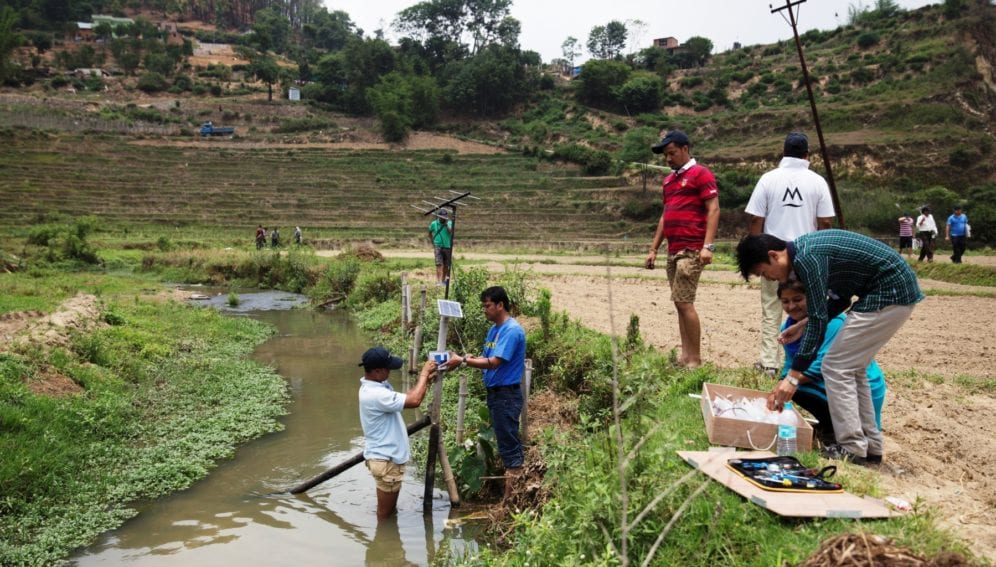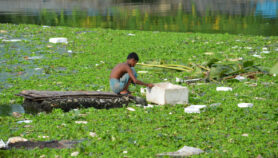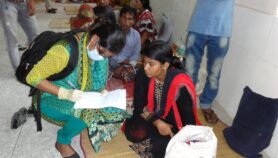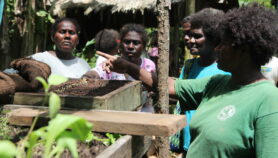Send to a friend
The details you provide on this page will not be used to send unsolicited email, and will not be sold to a 3rd party. See privacy policy.
If you are unable to listen to this audio, please update your browser or click here to download [6.6MB].
[KATHMANDU] Communities in flood-prone areas often do not have access to information about flood forecasting. As a result, they do not have sufficient time to evacuate and put their cattle and belongings in a safe area. The new Community-Based Flood Early Warning system, International Centre for Integrated Mountain Development (ICIMOD)’s new initiative, now allows communities downstream to access almost real-time information about the water level upstream.
The system is cheap (at US$1,000) and the technology simple. A solar-charged transmitter has a flood gauge set up on a river, and a receiver has a control unit installed in a household on the riverbank. As the water rises, the electronic sensors produce an alarm, which is communicated to the receiver through a wireless device. A caretaker observes the risk level and sends a flood-warning message via mobile phone. The message is relayed to the focal person living in flood-prone downstream villages, the project team and the district disaster management authorities, who further disseminate the information to the vulnerable communities further downstream.
Communities along some 45 flood-prone villages downstream of Jiadhal and Singora rivers in India are already benefitting from the service and have an average lead time of one or two hours to prepare for the rising waters. In 2014 the system was among winners of the UN Climate Change secretariat's Lighthouse Activity Award, which recognises innovative and transformative solutions that address climate change and wider economic, social and environmental challenges.













